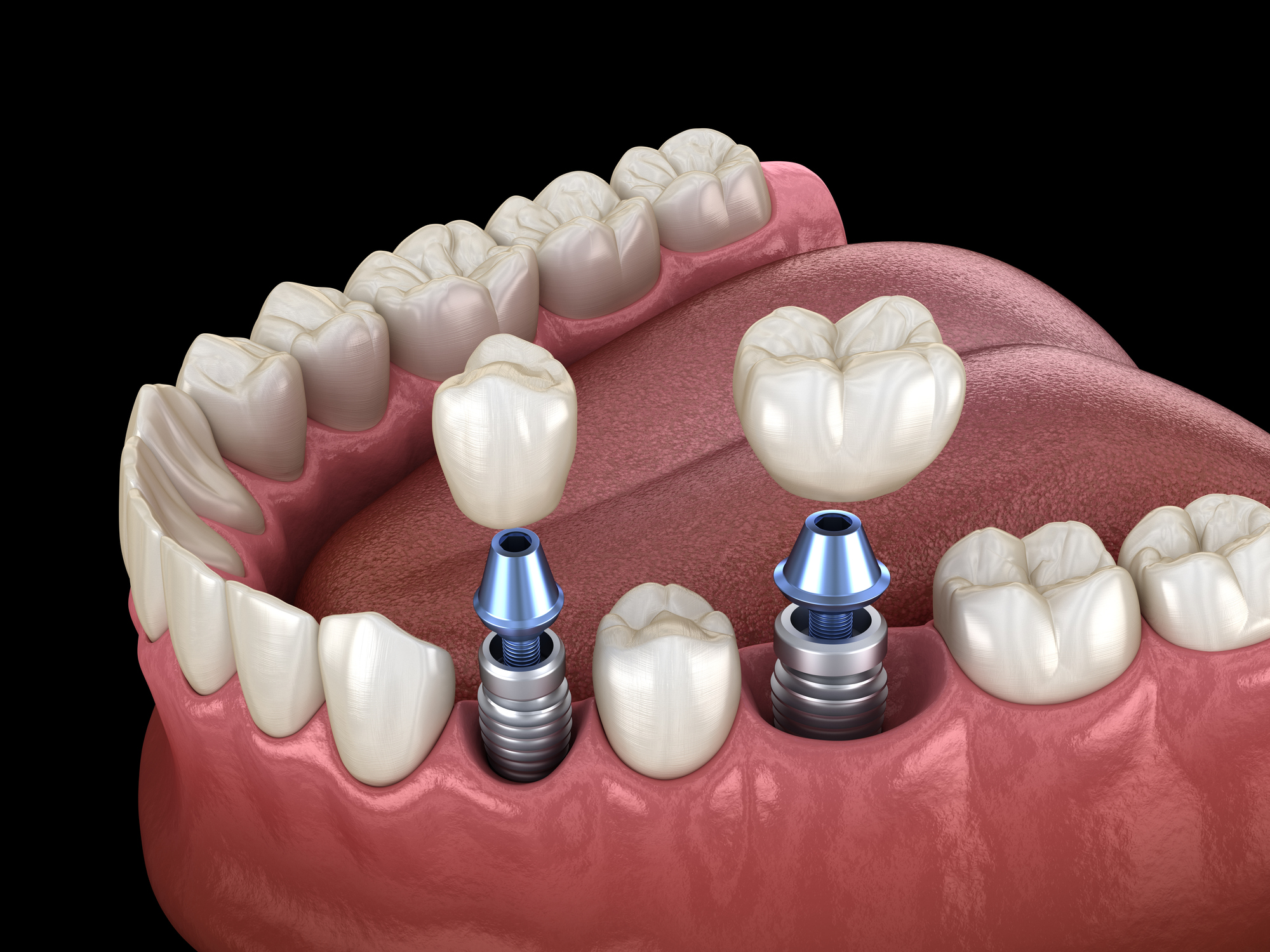4 Easy Facts About Dental Sense Shown
Wiki Article
Our Dental Sense Ideas
Table of ContentsThe Buzz on Dental SenseDental Sense - An OverviewThe Dental Sense DiariesOur Dental Sense Statements
are clinical devices operatively implanted right into the jaw to bring back a person's ability to eat or their look. They provide assistance for artificial (phony) teeth, such as crowns, bridges, or dentures. When a tooth is lost as a result of injury or illness, a person can experience complications such as rapid bone loss, malfunctioning speech, or changes to chewing patterns that result in discomfort.Dental dental implant systems contain an oral implant body and oral implant joint and might also include a joint fixation screw. Front tooth filling. The dental implant body is surgically placed in the jawbone in location of the tooth's root. The dental implant abutment is generally connected to the dental implant body by the abutment fixation screw and extends with gum tissues into the mouth to support the affixed artificial teeth
(https://disqus.com/by/dentalsense1/about/)Structure of The Dental Implant System choosing oral implants, talk with your oral service provider concerning the possible benefits and dangers, and whether you are a candidate for the treatment. Points to take into consideration: Your general health is a vital factor in identifying whether you are a good candidate for dental implants, for how long it will require to recover, and the length of time the implant might remain in area.
Smoking cigarettes may influence the recovery process and reduce the long-lasting success of the dental implant. The healing procedure for the implant body might take a number of months or longer, during which time you generally have a momentary joint instead of the tooth. the dental implant procedure: Thoroughly adhere to the oral hygiene guidelines provided to you by your oral service provider.
Dental Sense Fundamentals Explained
Implant failure can lead to the need for another surgery to deal with or replace the dental implant system. Brings back the capacity to chew Restores cosmetic look Assists keep the jawbone from reducing due to bone loss Protects the health and wellness of the surrounding bone and periodontals Helps keep adjacent (neighboring) teeth steady Boosts lifestyle Damage to surrounding natural teeth during dental implant positioning Injury to the surrounding tissues during surgery, such as sinus perforation Injury during surgical procedure (as an example, fracture of surrounding jawbone) Poor feature, such as seeming like the teeth do not attack together usually A feeling that the tooth is loosened or turning in location arising from an abutment screw loosening Implant body failing (looseness of the implant body) as a result of systemic infection, which may be most likely in individuals with unrestrained diabetics issues because of regional infection in bone and periodontals supporting the dental implant body because of delayed healing, which might be extra most likely in individuals who smoke Trouble cleaning the gum tissues around the dental implant, resulting in inadequate dental hygiene Unattended gum illness Post-surgical pins and needles because of nerve impingement or damage Constantly inform healthcare providers and imaging technicians that you have dental implants prior to any kind of magnetic resonance imaging (MRI) or x-ray treatments.FDA is not knowledgeable about any unfavorable occasions reported for MRI or x-ray treatments with dental implants. Dental implants systems are usually made from products that comply with international consensus requirements of the International Organization for Standardization (ISO) or ASTM International. These criteria have information of what makes a safe product.

A dental implant is a framework that replaces a missing tooth. With screw-like devices, the specialist inserts an implant into the jawbone, and it acts as an anchor for a synthetic tooth, called a crown.
About Dental Sense
Some individuals are not qualified for dental implant surgery. It is for dental specialists to operate on people with: severe illnessuncontrollable metabolic diseasebone or soft cells disease or infectionIf these issues are dealt with, a person can have the surgical procedure. In, dental surgeons avoid operating individuals with: If people with any of the above go through oral implant surgery, there is a higher threat of the implant failing.
Oral dental implant surgery is a personalized process. It's not the exact same for every person. The complying with provides a basic review of what you can anticipate your dentist, dental specialist, periodontist or prosthodontist to do: Put the dental implant surgically. Offer you time to recover. Affix the blog post and final crown, bridge or denture.
Next off, your cosmetic surgeon will thoroughly position the dental implant into your jaw. Your doctor will certainly reposition your periodontals and close the incision with stitches. If your implant is near the front of your mouth, your dentist will make a momentary tooth for you to use until you heal. This way, you won't have a void in your smile while you recuperate.
The 4-Minute Rule for Dental Sense
During the recovery phase, your jawbone must fuse to the dental implant. This procedure can take anywhere from 3 to nine months.Once your implant heals, your dental practitioner can affix the abutment (small port message) and your last repair (crown, bridge or denture). This generally takes concerning one hour to complete and might call for a second small surgery. You should not feel any kind of discomfort throughout your oral implant treatment since your service provider will certainly make use of drug to numb your periodontals.
Report this wiki page